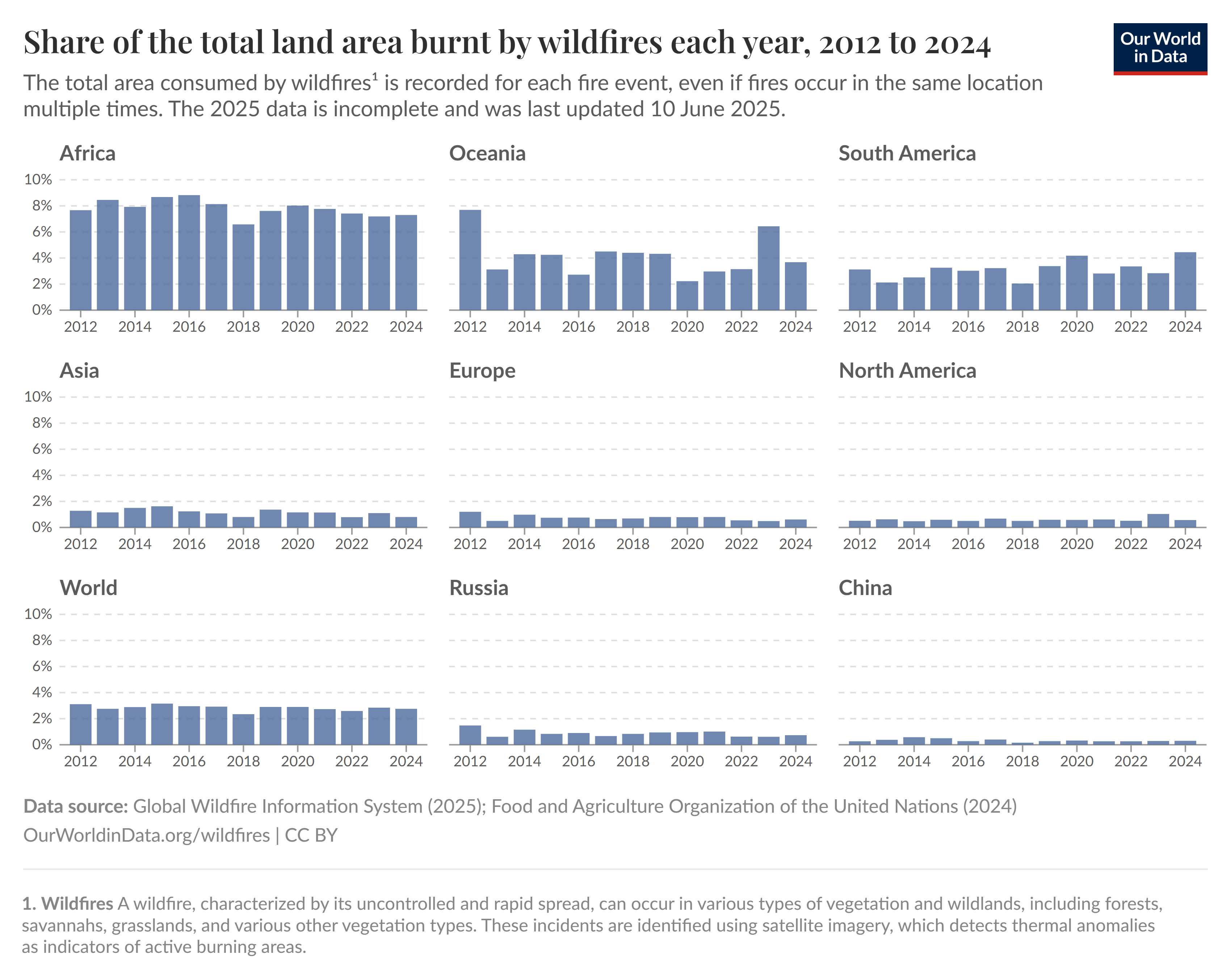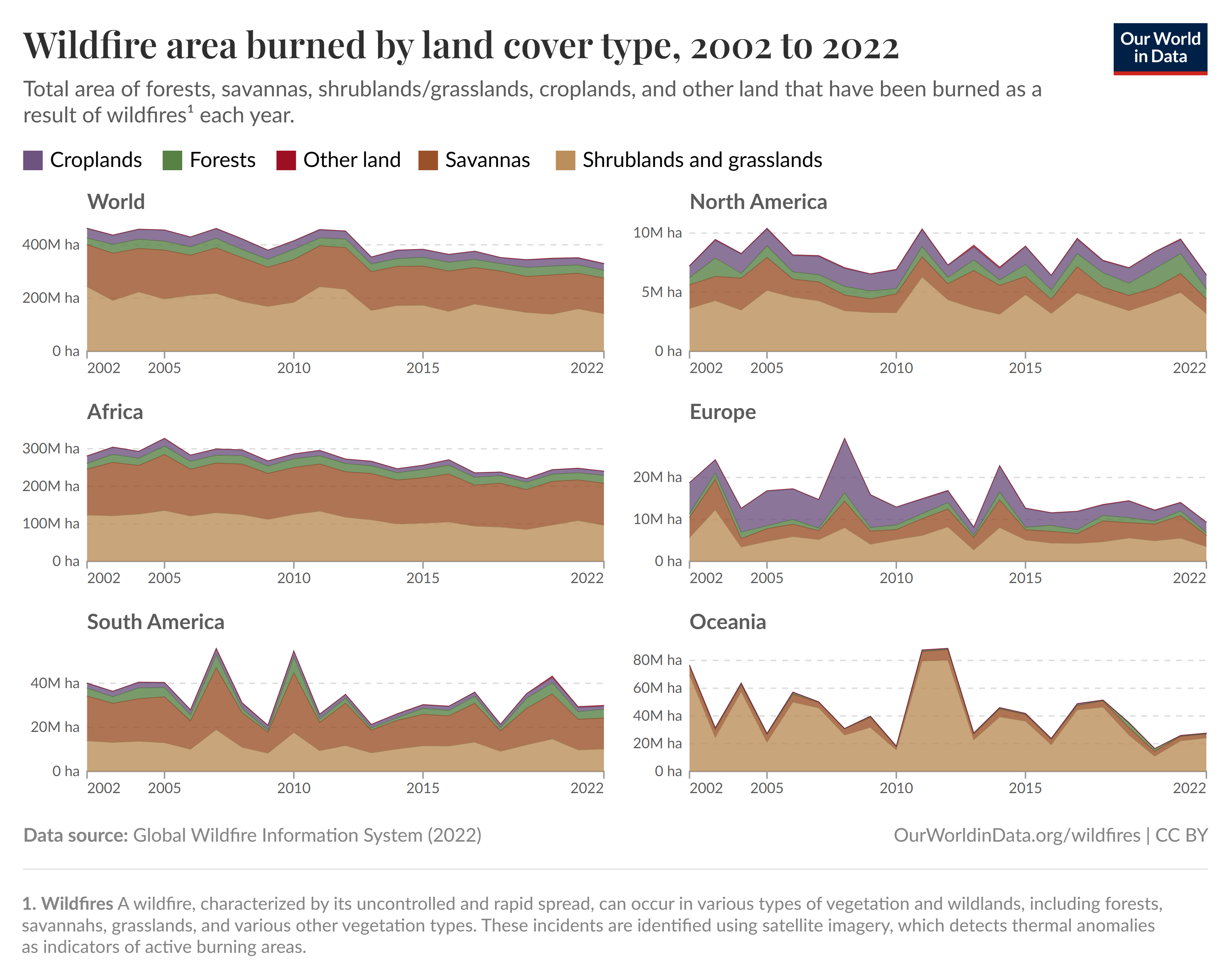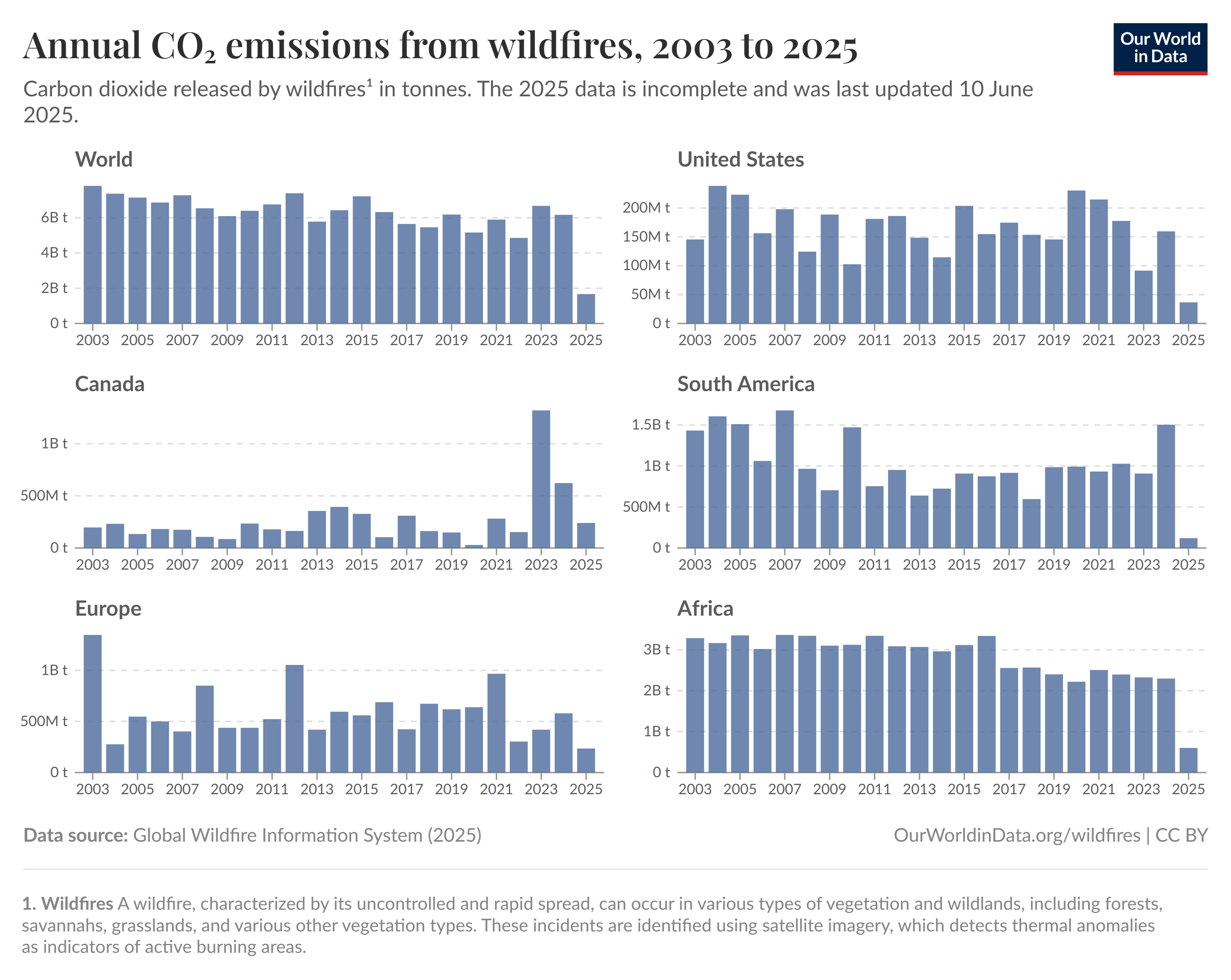Climate fanatics keep claiming that more drought will lead to more forest fires. But since the early 2000s, there has been a global downward trend – in almost every region of the world. Here are the facts that the mainstream media deliberately ignore.
Just recently, the national media was full of reports that smoke from the Canadian wildfires has reached Europe. This is often accompanied by the usual climate change scaremongering. As the global climate changes, such fires would become more frequent as extreme weather events increase. Although this has already been disproved by extensive research. However, the repeated spread of false news does not make such claims any more true.
As usual, the climate change card is pulled out when it comes to plant fires (which, by the way, have been around since time immemorial). But somehow all the climate propaganda doesn’t match reality in this respect. This is borne out by statistics collected on the platform“Our World in Data“.

If we look only at the period 2012-2024, we see that the percentage of areas destroyed by such fires is slightly decreasing worldwide (from 3.1% to 2.8% of land area). Without significant upward deviations. However, there are regional differences, as the graph above shows.

This is illustrated more clearly in the graph above, which shows the different types of vegetation affected by the fires. Here the data even goes back to 2002. As can be clearly seen, there is also a downward trend here – from 462.66 million hectares to 330.62 million hectares of land. The absolute majority of this is bush, grassland and savannah. Especially in Africa.

What about carbon dioxide, demonised by climate fanatics? Here too, there has been a downward trend (since 2003, see graph above). This is particularly true in Africa, which is particularly prone to such fires. What has changed there? In any case, there are no signs that the situation is getting worse. Although of course this is of no interest to the climate conspirators and their media mouthpieces.
It shows once again that the world clearly needs more climate realism instead of climate fanaticism. And even more, that the media world needs the corrective influence of a free, alternative media, because the mainstream – whether state or corporate – prefers to serve general (but obviously false) narratives.

